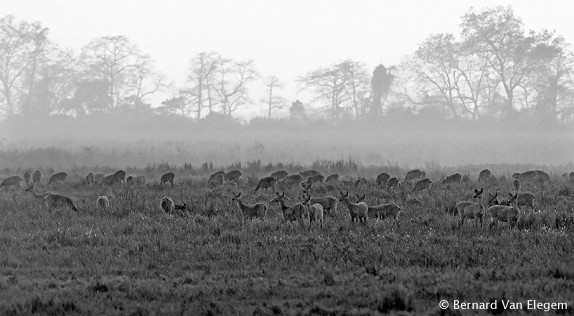- 1 of 54
- next
Huge herd of Swamp Deer, Barasingha - Grote kudde Moerasherten - Recervus duvaucelii, Cervus duvaucelii
This huge herd of Barasinghas, consisting of almost 100 individuals, was grazing the fresh burnt grass. The buring of grass is a typical nature conservacy measure in Kaziranga to hold the swamps open. This is done to hold large populations of the big grazers such as the Indian Rhino and the Barasingha. The Swamp Deer or Barsingha, holds three subspecies, one ocurring in Central India, a second one in the wetlands of Nepal, and a third one 'rajitsinhi', ocurring in the Eastern floodplains of the Brahmaputra. This is the subspecies 'ranjitsinhi', for which Kaziranga is a stronghold. The entire population of Kaziranga is estimated at about 500 individuals. The species has suffered huge declines, as a lot of the wetland species in India did during the past decades, due to the loss of habitat in the fertile alluvial floodplains. Outside the protected ares, the species still suffers from competition with livestock, poaching and habitat degradation. The species is now classified as Vulnerable on the IUCN Red List. Some taxonomists consider only two subspecies: 'duvaucelii', ocurring in the wet tall grasslands in Nepal and Eastern India, and brandeni, which survives only in the dry grasslands of Kanha National Park in Central India.

